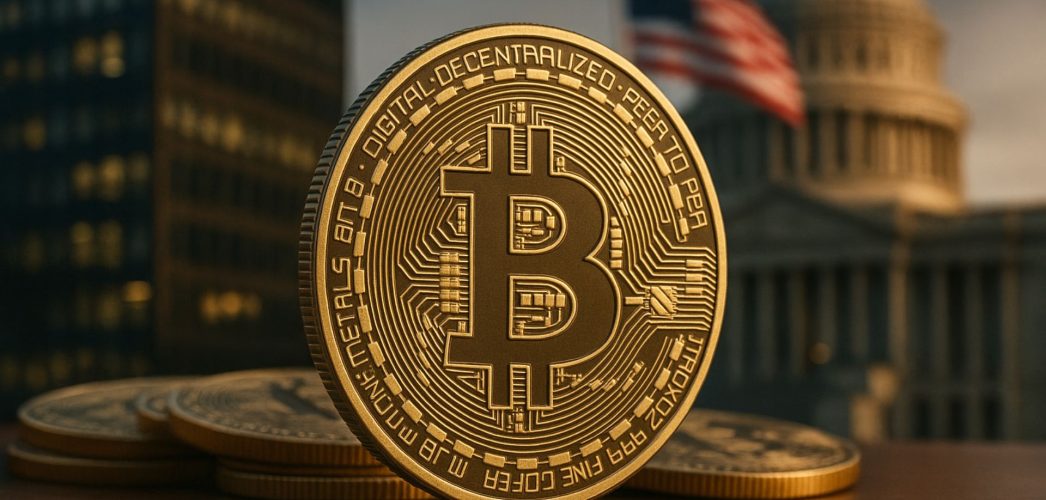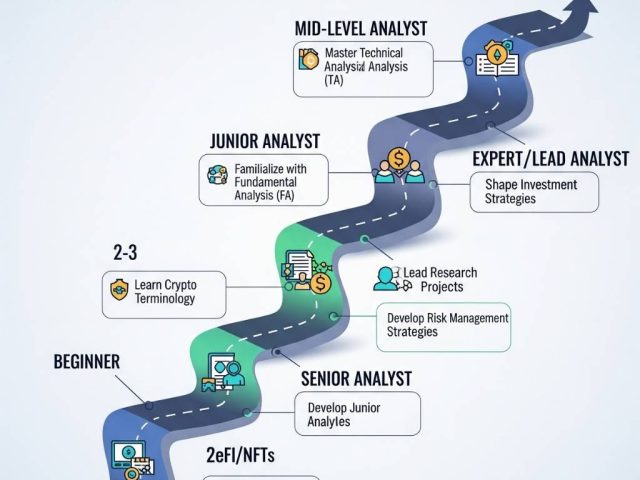The financial world is witnessing a fascinating shift. Bitcoin, once dismissed by many as a purely speculative digital curiosity, is increasingly finding its way onto the balance sheets of major corporations and even national governments. These aren’t just casual investments; they represent Bitcoin Strategic Reserves – significant holdings accumulated with long-term goals in mind.
But what exactly are these reserves? Who is holding them, and why does this trend matter for businesses, investors, and the global economy? Dive into this comprehensive analysis as we explore the rise of Bitcoin strategic reserves, the motivations behind them, and their potential impact.
What Exactly is a Bitcoin Strategic Reserve?
Think of traditional strategic reserves: governments stockpile oil, gold, or foreign currencies as a safety net against crises. A Bitcoin Strategic Reserve applies this concept to the digital age. It involves a corporation or government deliberately holding a substantial amount of Bitcoin not for quick trading profits, but as a long-term treasury asset.
This strategy often stems from viewing Bitcoin as “digital gold”. Proponents point to its key characteristics:
- Provable Scarcity: A hard cap of 21 million coins ever.
- Decentralization: Operating outside the control of traditional banks or governments.
- Potential Store of Value: A way to potentially hedge against inflation eroding the value of traditional currencies.
Holding Bitcoin strategically is fundamentally different from individual investing. It involves formal institutional processes, complex custody solutions for large amounts , adherence to specific accounting rules , and carries the potential for significant market influence.
Who is Holding Bitcoin Reserves?
The landscape of Bitcoin reserve holders is growing, primarily featuring two groups:
Corporate Trailblazers
Publicly traded companies, in particular, have been pioneers. Firms like MicroStrategy (now Strategy) and Tesla made waves with large initial purchases, encouraging others.
The list now includes:
- Crypto-Native Companies: Exchanges like Coinbase and fintechs like Block (formerly Square).
- Bitcoin Miners: Companies like Marathon Digital, Riot Platforms, Hut 8, and CleanSpark hold Bitcoin generated from their operations.
- Diverse Industries: Investment firms (Galaxy Digital ), medical tech (Semler Scientific ), Japanese investment firm Metaplanet , and e-commerce giant MercadoLibre have also joined.
As of early 2025, estimates suggested around 80 public companies held significant Bitcoin , with private companies also holding substantial amounts.
Table 1: Selected Major Corporate Bitcoin Holdings (Publicly Listed, as of early-mid 2025)
| Entity | Symbol:Exchange | Industry | Reported BTC Holdings | Approx. USD Value (at time of data) | % of Total Bitcoin Supply |
|---|---|---|---|---|---|
| MicroStrategy Inc. (Strategy) | MSTR:NADQ | Business Intelligence/BTC | 528,185 | ~$44.3 B | ~2.515% |
| Marathon Digital Holdings Inc. | MARA:NADQ | Bitcoin Mining | 47,531 – 47,600 | ~$4.0 B | ~0.227% |
| Riot Platforms, Inc. | RIOT:NADQ | Bitcoin Mining | 19,223 | ~$1.6 B | ~0.092% |
| CleanSpark Inc. | CLSK:NASDAQ | Bitcoin Mining | 11,869 | ~$995 M | ~0.057% |
| Tesla, Inc. | TSLA:NADQ | Automotive / Energy | 11,509 | ~$964 M | ~0.055% |
| Hut 8 Corp | HUT:NASDAQ | Bitcoin Mining | 10,264 – 10,273 | ~$861 M | ~0.049% |
| Coinbase Global, Inc. | COIN:NADQ | Cryptocurrency Exchange | 9,000 – 9,480 | ~$754 – $795 M | ~0.045% |
| Block, Inc. | SQ:NYSE | Fintech / Payments | 8,485 | ~$711 M | ~0.040% |
| Galaxy Digital Holdings | BRPHF:OTCMKTS | Financial Services / Digital | 8,100 – 15,449 | ~$679 M – $1.3 B | ~0.039% – 0.074% |
| Metaplanet Inc. | 3350.T:TYO | Investment / BTC Treasury | 4,206 – 4,525 | ~$352 – $380 M | ~0.020% – 0.022% |
| Bitcoin Group SE | BTGGF:TCMKTS | Investment | 3,605 – 3,830 | ~$302 – $321 M | ~0.017% – 0.018% |
| Semler Scientific | SMLR:NASDAQ | Medical Technology | 3,192 | ~$268 M | ~0.015% |
| Boyaa Interactive International Ltd | 0434.HK:HKEX | Online Gaming | 2,410 – 3,183 | ~$202 – $267 M | ~0.011% – 0.015% |
| HIVE Digital Technologies | HIVE:NASDAQ | Bitcoin Mining | 2,201 | ~$184 M | ~0.010% |
| NEXON Co. Ltd | NEXOF:OTCMKTS | Video Games | 1,717 | ~$144 M | ~0.008% |
Source: Compiled from data in. Holdings and valuations are approximate and subject to change. Note: Galaxy Digital and Metaplanet show some variance in reported holdings across sources/dates.
Governmental & Quasi-Governmental Entities
Governments are also entering the fray:
- Seizures: The United States and China hold the largest known government reserves, primarily from assets seized in law enforcement actions (like Silk Road or Plustoken). The UK and Germany also hold seized Bitcoin.
- Active Policy: El Salvador famously adopted Bitcoin as legal tender and actively accumulates reserves through purchases. In March 2025, a US Executive Order aimed to establish a formal “Strategic Bitcoin Reserve,” initially using only seized assets.
- Mining: Some state-linked entities, like in Bhutan, reportedly mine and accumulate Bitcoin.
- Sub-National Interest: Lawmakers in US states like Texas, Ohio, and New Hampshire have proposed state-level Bitcoin reserves , and the Mayor of Vancouver, Canada, suggested adding it to the city’s treasury.
Table 2: Known Governmental Bitcoin Holdings (as of early-mid 2025)
| Country/Entity | Source of Holdings | Reported/Estimated BTC Holdings | Approx. USD Value (at time of data) | % of Total Bitcoin Supply | Official Status/Policy Notes |
|---|---|---|---|---|---|
| USA | Seizures | ~207,189 | ~$17.4 B | ~0.987% | Holds significant seized assets. Executive Order (Mar 2025) established Strategic Bitcoin Reserve using existing holdings. |
| China | Seizures (e.g., Plustoken) | ~194,000 | ~$16.3 B | ~0.924% | Primarily from law enforcement; official policy towards crypto generally restrictive. |
| UK | Seizures (presumed) | ~61,000 | ~$5.1 B | ~0.290% | Details less publicised. |
| El Salvador | Purchases / Policy | ~6,147 (as of Apr 15, 2025) | ~$517 M | ~0.029% | Legal tender since Sep 2021; active accumulation via small, frequent buys. Facing IMF pressure regarding strategy. |
| Germany (BKA) | Seizures | 50,000 initially, reduced later | Variable | Variable | Seized Jan 2024; significant outflows observed mid-2024, suggesting sales or transfers. |
| Bhutan | Mining (reported) | ~12,578 (reported figure) | ~$1.1 B | ~0.060% | Reportedly accumulated via state-run mining operations. |
Source: Compiled from data in. Holdings and valuations are approximate and subject to change.
Why Hold Bitcoin Reserves? The Driving Forces
The motivations behind building Bitcoin reserves are diverse:
- Financial & Economic:
- Inflation Hedge/Store of Value: Protecting wealth from fiat currency depreciation is a primary driver. Bitcoin’s fixed supply is contrasted with expandable government money.
- Asset Diversification: Adding an asset potentially uncorrelated with traditional holdings like cash or bonds to reduce overall risk.
- Potential High Returns: Bitcoin’s historical price appreciation attracts those seeking significant gains.
- Treasury Management: Exploring yield generation or future efficiencies in payments. New accounting rules make Bitcoin’s value impact more visible.
- Corporate Strategy:
- Core Business Integration: For companies like MicroStrategy, Bitcoin is the strategy, fundamentally reshaping the business.
- Industry Alignment: Crypto-native firms hold Bitcoin to signal commitment and confidence in the ecosystem.
- Natural Extension for Miners: Holding mined Bitcoin is inherent to the business model.
- Geopolitical & National Strategy:
- Economic Resilience: Enhancing national financial stability against shocks.
- Global Leadership: Gaining a first-mover advantage in a scarce asset and influencing global crypto standards.
- Strengthening/Challenging Currency Systems: Debates exist on whether US Bitcoin holdings could reinforce the dollar or if Bitcoin could challenge dollar dominance globally.
- Countering Adversaries/Sanctions: Using Bitcoin to bypass traditional finance or track illicit flows.
- Attracting Investment: Aiming to draw tech innovation and capital, as seen with El Salvador.
Managing the Reserves: Acquisition and Custody
Holding Bitcoin strategically requires careful planning:
Acquisition Methods
- Direct Purchases: Buying on exchanges or via OTC desks, either in bulk or gradually (Dollar-Cost Averaging).
- Financing: Using debt (like convertible bonds), equity sales, or operational cash flow to fund purchases. Block uses 10% of crypto product profits.
- Mining: Generating Bitcoin directly through mining operations.
- Seizures: Governments acquiring Bitcoin via law enforcement.
- ETFs/ETPs: Investing in regulated Bitcoin funds trading on stock exchanges, simplifying custody and accounting but introducing counterparty risk.
Custody Solutions
Securing large Bitcoin holdings is critical:
- Self-Custody: Direct control over private keys, offering maximum control but requiring significant technical expertise and security measures. Risks include key loss or theft.
- Third-Party Custodians: Using specialized firms or exchanges to store Bitcoin, outsourcing technical complexity but introducing counterparty risk (insolvency, hacks). Thorough vetting is crucial.
- Cold Storage: Storing private keys offline on physical devices, drastically reducing online hack risks but requiring robust physical security.
- Multi-Signature (Multisig): Requiring multiple keys for transactions, enhancing security against single points of failure.
Robust governance, security protocols, and adherence to evolving accounting and reporting standards are essential for responsible management.
Market Impact: When Whales Make Waves
Large reserve activities can significantly sway the Bitcoin market:
- Price Volatility: Big purchases can drive prices up (demand shock), while large sales can push them down (supply shock). The mere threat of sales from large holders like the US government or the Mt. Gox trustee can impact sentiment. Leveraged positions can amplify moves.
- Liquidity: The market’s ability to absorb large trades without drastic price shifts is crucial. Crypto liquidity, while improving (partly due to ETFs ), can be lower than traditional markets and dry up during stress. Large orders face “slippage” – executing at worse prices as liquidity is consumed.
- Sentiment: Crypto markets are highly sensitive to news and narratives. Purchase announcements can fuel optimism, while sales rumors or regulatory fears can trigger sell-offs. Transparency around reserve actions is key.
- Broader Links: Bitcoin shows correlation with global liquidity (like M2 money supply) , suggesting central bank policies influence its price. It also correlates highly with other major cryptos like Ethereum.
Bigger Picture: Macroeconomic and Geopolitical Ripples
Bitcoin reserves have implications beyond crypto:
- Traditional Finance: Normalizes Bitcoin as an asset class, potentially attracting more institutional investment. Infrastructure like ETFs bridges the gap. Introduces new risks (volatility, custody) into the traditional system.
- Monetary Policy: Could potentially challenge the effectiveness of central bank tools if value moves outside the traditional system. May incentivize Central Bank Digital Currency (CBDC) development as a state-controlled alternative.
- Geopolitics: Potential to challenge US dollar dominance , though some argue US adoption could reinforce it. Bitcoin could be used to bypass sanctions or fund state activities discreetly. A potential “Bitcoin arms race” among nations is conceivable.
Navigating the Choppy Waters: Risks and Criticisms
Holding Bitcoin reserves is not without significant challenges:
- Extreme Volatility: The biggest hurdle, undermining short-term store-of-value reliability and posing financial risk.
- Regulatory Uncertainty: A fragmented and evolving global regulatory landscape creates compliance risks and deters conservative adopters.
- Security & Custody Risks: Protecting digital assets from theft, hacks, or key loss is complex and critical. Counterparty risk with custodians is significant.
- Environmental Concerns: Bitcoin mining’s energy consumption raises ESG issues.
- Market Integrity: Concerns about potential manipulation persist.
- Accounting Challenges: While new fair value rules increase transparency, they also introduce earnings volatility.
- Fundamental Criticisms: Skeptics question Bitcoin’s intrinsic value, view it as purely speculative, and argue its volatility makes it unsuitable as a stable reserve.
Bitcoin vs. Traditional Reserves: A Comparative Glance
How does Bitcoin stack up against gold and major fiat currencies (like USD)?
| Feature | Bitcoin | Gold | Major Fiat Currencies (e.g., USD) |
|---|---|---|---|
| Scarcity | Absolute (21M cap) | Natural (~1.5%/yr growth) | Elastic, potentially inflationary |
| Decentralization | High | Physical, market influenced | Centralized control |
| Volatility | Very High | Moderate | Low (relative price) |
| Liquidity | Growing but variable | Deep, established | Extremely high |
| Transferability | High (digital, global) | Low (physical, costly) | High (digital/physical) |
| Custody | Complex (digital keys) | Physical (vaults) | Banks, digital systems |
| Regulatory Status | Evolving, uncertain | Established, regulated | Fully regulated |
| Historical Record | Short (since 2009) | Millennia | Modern system post-WWII |
| Counterparty Risk | Minimal (self-custody); High (custodians) | Minimal (physical); Present (paper/custodians) | Issuer/Bank dependent |
| Environmental Impact | Significant (PoW mining) | Mining impact | Lower direct impact |
Bitcoin offers potential high returns , absolute scarcity , digital portability , and decentralization. However, its extreme volatility , regulatory uncertainty , complex security , short history , and environmental concerns are major drawbacks compared to the stability of gold or liquidity of fiat. It may serve best as a diversification tool within a larger portfolio for those accepting higher risk.
The Future of Bitcoin on the Balance Sheet
The trend of adopting Bitcoin strategic reserves is undeniable, though still nascent. Its future path depends heavily on regulatory clarity , market maturation (reduced volatility, deeper liquidity) , technological advancements in custody and security , the performance of early adopters , and the broader macroeconomic climate.
Bitcoin’s role as a strategic reserve remains an unfolding experiment. It embodies a tension between disruptive potential and inherent risks. Whether it becomes a standard component of institutional and governmental treasuries or remains a volatile niche asset is a question only time, regulation, and market evolution can answer. For now, it represents a bold step into a new financial frontier.





